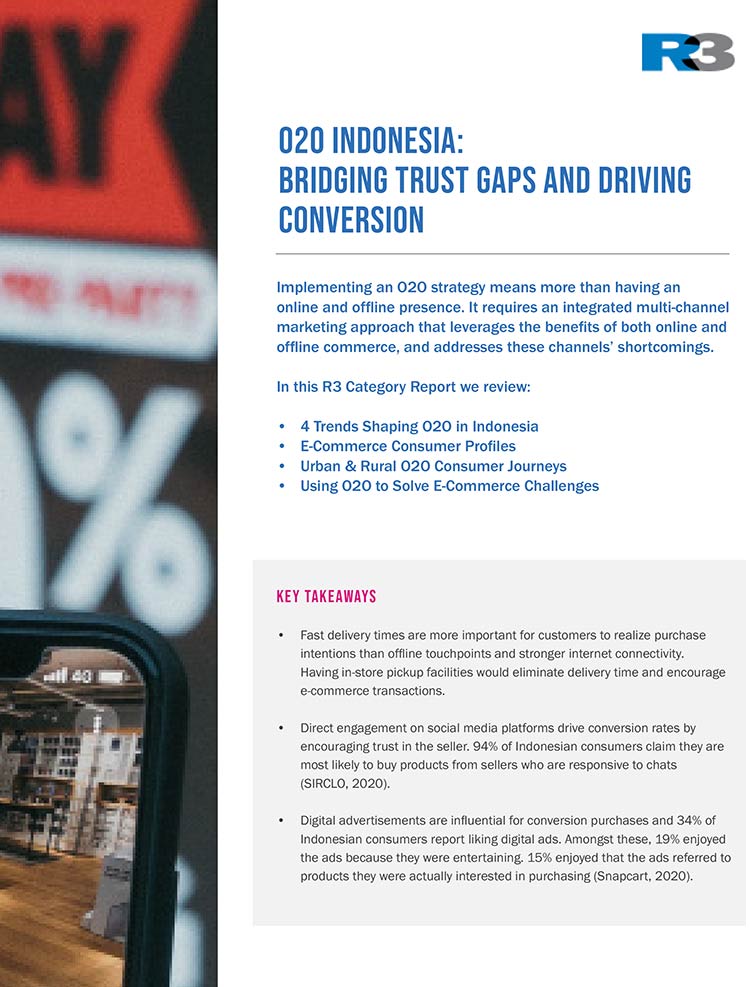Implementing an O2O strategy means more than having an online and offline presence.
It requires an integrated multi-channel marketing approach that leverages the benefits of both online and offline commerce and addresses these channels’ shortcomings.
In this R3 Category Report, we review:
- 4 trends shaping O2O in Indonesia
- E-commerce consumer profiles
- Urban and rural O2O consumer journeys
- Using O2O to solve e-commerce challenges
Key Takeaways
- Fast delivery times are more important for customers to realize purchase intentions than offline touchpoints and stronger internet connectivity. Having in-store pickup facilities would eliminate delivery time and encourage e-commerce transactions.
- Direct engagement on social media platforms drive conversion rates by encouraging trust in the seller. 94% of Indonesian consumers claim they are most likely to buy products from sellers who are responsive to chats (SIRCLO, 2020).
- Digital advertisements are influential for conversion purchases and 34% of Indonesian consumers report liking digital ads. Amongst these, 19% enjoyed the ads because they were entertaining. 15% enjoyed that the ads referred to products they were actually interested in purchasing (Snapcart, 2020).

